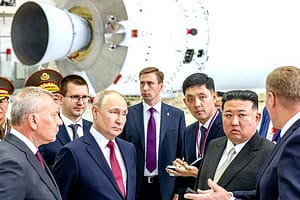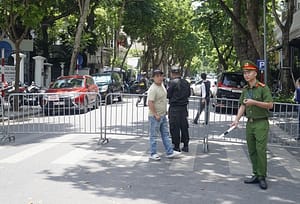I spent the last decade studying US military operations during the Vietnam War. My focus was on army activity against the Viet Cong in Quang Ngai Province. This is where the My Lai Massacre occurred. I was trying to understand why the massacre happened and what we might learn from it.
I came away with several such lessons, but the most important one is this: “counter-insurgency” is a kind of myth or, rather, a comforting story Great Powers tell themselves about what they are doing when they occupy a foreign country. The occasions in which Great Powers occupied foreign countries are well known.
An incomplete list, focusing on post-WWII, would include the French in Vietnam, the British in Malaysia, the French in Algeria, the Americans in Vietnam, the Soviets in Afghanistan, the Americans in Afghanistan, and the Americans in Iraq (twice).
These cases are all different, but in each of them a Great Power sent large military forces to fight “insurgents” on foreign shores. The idea was to use “counter-insurgency warfare” to destroy the “insurgents” and put the invaded country on a footing favorable to the invading Great Power.
Much has been written about how to fight a “counter-insurgency” campaign, but it generally boils down to this in practice: set up strongpoints (“firebases”) where your troops can be relatively safe; sally out of those strongpoints to engage and defeat the “insurgents”; create larger and larger pacified areas (“inkspots”); and generally try to convince the locals that you are there to help them (“winning hearts and minds”).
The trouble is it almost never works, where “works” means “ends in a condition favorable for the invader and the invaded.” The incomplete list given above—Vietnam, Malaysia, Algeria, Afghanistan, Iraq—is a list of military and human tragedies. None of these conflicts ended well. Why is this?
The reason is that the Great Powers were not, despite what they claimed, fighting “counter-insurgency wars.” Rather, they were fighting wars of occupation. We don’t ordinarily think of these post-war conflicts in these terms. The brutal, imperialistic Nazis, we think, occupied countries. We don’t. We try to help other countries by supporting the “good guys” militarily. The “bad guys” are the “insurgents,” and we are there to help kill them. Our intentions are good.
But the cold, hard fact is that the Great Powers were occupiers. The residents of the countries invaded (Vietnam, Malaysia, Algeria, Afghanistan, Iraq) were never given the memo that we were there to help them by killing “insurgents.”
Rather, they saw a foreign power invading their country, a country that may not be perfect but was theirs. Naturally, they took umbridge at this affront. What were these foreigners doing in their country? These well-armed strangers say they are here to “help,” but they seem to be killing a lot of “us” and blowing stuff up.
It’s hardly surprising that the locals didn’t like the Great Power invaders very much. In the case of Quang Ngai Province in Vietnam, the locals all disliked the American forces. Some were mildly hostile; some were very hostile. But they were all hostile. They wanted the Americans to go away. The locals’ hostility had important military implications. Essentially, it made it impossible for the US troops to conduct operations with any degree of safety.
In theory, they were there to fight the Viet Cong. They quickly realized, however, that they weren’t just fighting the VC, but what the troops called “VC sympathizers.” Who were the “VC sympathizers?”
Nearly every Vietnamese they encountered in the field. You might meet some “good” Vietnamese in Saigon, but out in “Indian Country” (as they called it), they were all hostile and, well, might just kill you. When questioned, the US soldiers who committed the My Lai Massacre insisted, that the people they had murdered were all probably “VC sympathizers.”
It almost goes without saying that a war of occupation cannot be “won” short of killing or otherwise incapacitating all the locals (e.g., putting them in camps or selling them into slavery). The Romans, apparently, did that sort of thing. But no modern Great Power is going to go to those barbaric lengths, and for good reason. So how do wars of occupation end? The Great Power invaders leave, but only after huge amounts of treasure and human life have been wasted.
One wonders why Great Powers have made the same mistake over and over in the post-war period. Part of the reason, I think, is that they tell themselves a lie, namely, that they are fighting a “counter-insurgency” war. They truth is they were fighting unwinnable wars of occupation.
Marshall Poe, Ph.D., is a historian and the editor of the New Books Network. He is the author of The Reality of the My Lai Massacre and the Myth of the Vietnam War (Cambria Press, 2023).






Leave a Comment